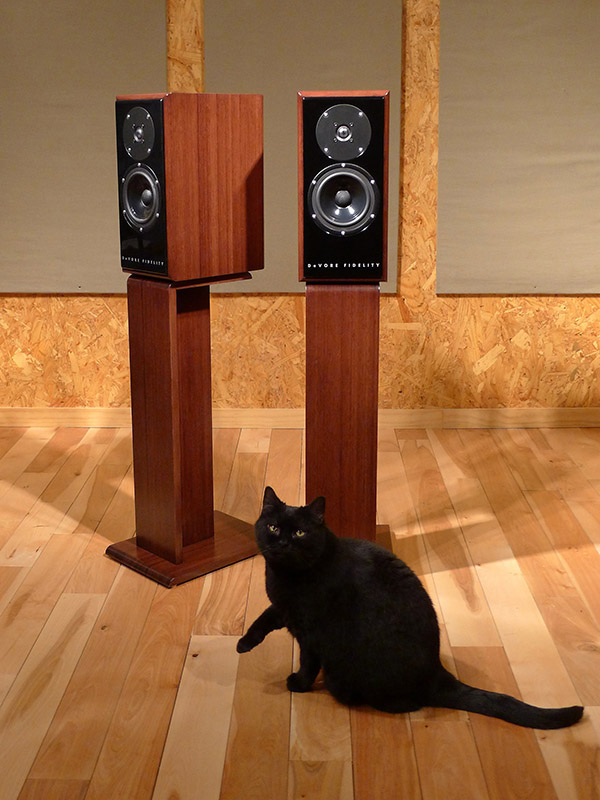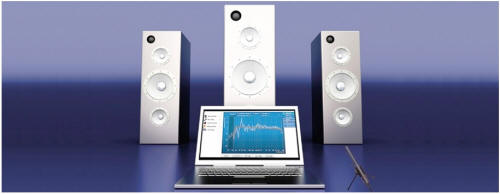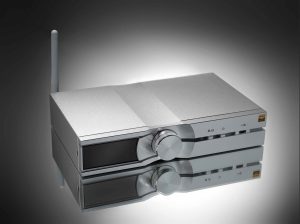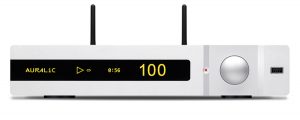This is a review of the Cary Audio DMC-600 Special Edition ("SE") digital music center which was added to the Cary Audio line up of products in the fall of 2014 or, perhaps, early 2015. It went on my radar after I received a press release in the fall of 2014. Intrigued, I touched base with Cary corporate and requested a review sample. I received a unit after it had made the rounds to a few electronics shows earlier in 2015. Full disclosure: I have been the satisfied owner of a Cary 306 Professional SACD/CDP for well over five years. At the time I came into the 306 it was Cary’s top-of-the-line CDP. I reviewed it in 2011 and subsequently purchased the review sample. I have enjoyed it immensely ever since and, in call candor, since that time I have not paid a lot of attention to CDP's. As I have commented in a few of my reviews since, shortly after obtaining the CD 306 I jumped head-long into the world of digital music files. The 306 has been used primarily as a DAC. While I had not abandoned compact discs, the sound still remained superior to digital files from a pure fidelity point of view, (IMO). However, the 306 closed this disparity between media significantly. For the past five years, the sound of the 306 has suited my predilections very well.
But alas, time has passed, and like all things subject to the accelerated rate of advancement in electronics, DACs, the heart and brains of a CDP, have also advanced significantly. The press release caught my attention as first the unit offered a wide range of capabilities in reading various formats, and second I know Cary Audio to be a supplier of high quality, well-made audio gear. The DM 600 is a music centerpiece that acts as a standalone digital analog converter, a CD player, a Bluetooth receiver, and has three additional inputs for expansion. Perhaps most intriguing for me was the DMC 600SE's ability to play DSD, directing digital audio files
From the Cary Audio Website:
The DMC-600SE supports PCM up to 32 bit/ 384 kHz native audio as well as native DSD 64, 128, and 256 audio. Additionally, the DMC-600SE includes CSR aptX® lossless Bluetooth, SPDIF coaxial and Toslink inputs, AES/EBU inputs, and both fully balanced XLR and RCA outputs. To further enhance your listening enjoyment, The DMC-600SE also includes our TruBit™ Upsampling technology and our DiO™ vacuum tube and solid state analog outputs, as well as many other benchmark features.
As a CDP it excels. As a user of the 306 Pro, I'm competently familiar with the Cary "house" sound, which is lively without being exaggerated, detailed without being analytical, and the most compelling signature is having a rhythm and beat that brings real soul to an otherwise soulless codec. When setting up the DMC-600SE, which amounted to "plug and play," the subjective improvement in all aspects of the audio signal was immediate and profound. For those familiar with the Cary house sound, the DMC-600SE will certainly meet and exceed your expectations. Hopefully, those not too familiar with Cary Audio will have a solid grasp on the capabilities of the 600 by the end of this article.
With most new review products in the house, and when feasible, I find myself often switching between the review samples and my reference, because like most people, I have come to appreciate my own "in-house sound," and after years of accumulating gear I have also accumulated a system defined by my preferences. Interesting and quite telling is that this time around I have yet to toggle between the Cary 306 and the Cary DMC-600SE. I was simply locked on the 600 and I enjoy everything about its sound, which I immediately recognized as an "improvement" over the 306 Pro. There was no desire to toggle back. Mind you, the 306 Pro is a high end, refined, and is a superior product, so for Cary to outdo itself is impressive.
Like a Cary CDP I reviewed over 10 years ago, when a tube output stage in a CDP was relatively unique option, the 600 also has a selectable tube output stage with two 12Au7s. Should your mood, media selection, or supporting electronics dictate, the listener can forgo the tube and rely instead on the solid-state output stage.
Also, like the 306 the 600SE has a sample rate selection button on both the unit and the remote, Cary’s "TruBit™ Upsampling" uses a dedicated 128 bit DSP engine that allows for up to 7 different sample rates and an increased bit depth of 32 bits. I found that after toggling between the various sample rates remotely, I tended to land 352.8/384 (depending on input); I typically just left it there. When so inclined, I may toggle around to check in on my bearings and have vacillated around a bit, but still seem to land on the same rate.
Listening to the Cary DMC-600SE as a standalone CDP I give it the highest of marks. Over the course of the review period I was listening to a lot of new-to-me music and not a lot of my "reference" review catalog. I did, of course, sample my personal set of stand-bys, such as Stacy Kent, Dianne Reeves, and Ani Difranco. These all sounded fresh and enlivened if not invigorated by the new source. Of my newer-to-me samplings, there is the newest Modest Mouse, Artic Monkeys, Awolnation, and a bit of Alabama Shakes. But, the one disc/file that really blew me away is Joe Bonoamassa’s An Acoustic Evening at the Vienna Opera House. I cannot figure out why I have not zeroed in on this guy previously because I like blues and I like acoustic music, but I never really dug into him. Now, after this and other discs, I found he was playing a few days later at the Greek Theater here in Los Angeles. This led me to a ticket—broker site and overpaying for some good seats.
An Acoustic Evening at the Vienna Opera House is a very well recorded disc with great song selections. Through the DMC, the environment of the opera house was palpable and deep rooted into the tracks, the note rose from an absolute blackness which gave each a life of its own. I have owned speakers that have been decried as overly "analytical," and I have owned speakers that have been dismissed as too syrupy, thus, I have a solid knowledge base for purposes of assessing a good balance. The DMC-600SE gave such a wonderful balance to the GamuT M7’s I currently use as my reference that I had to redefine some of my internal dialog as to what was possible in my room. Bonomassa’s voice—a traditional bluesy range with a healthy dose of younger man—was crisp and defined through the Cary. While others, such as the aforementioned Kent, Reeves, and Difranco each had a vitality to them that was both natural and convincing.
Reeves’ live version of "Testimony" supplanted me to her room; her voice lifted me and carried me away. Kent’s standard "Comes Love" was as clean and rich as I have ever heard, and this is the disc that I take almost everywhere as my personal reference. While I may sound like I am gushing and, I guess I am, there are people that may not rate the DMC as high up the ladder as I do, but I cannot imagine it not being considered as one of the most functional, well-rounded, valuable products of the year. It is not the most refined payer I have ever heard and it has a bit if a utilitarian look to it, but against simluarly priced products, it is a worthy competitor.
To my delight, the 600-DMC was my introduction into DSD audio files.
Up to this time, my high-resolution experience was, and always has been with SACD. As iTunes, or the other software I had on hand, did not (or could not) read DSD files, I had to download Audio Nirvana Plus to play the DSDs I had on hand. First, I would like to say that hands-down DSD is more impressive to me than SACD by a significant margin. Though the files are extraordinarily large, the resolution and clarity of each file was a showstopper. Over the course of my time with the DMC, I accumulated a small collection of DSD files and have spent hours listening to them (over and over) for the vastly improved fidelity alone. It was the type of listening where you really don’t care what the music is because you are so immersed in the presentation. I can only hope that DSD takes off in a way that SACDs never seem to live up to. At this point, the only downside I see for the consumer is the very the large file size. Yes, storage is cheap by comparison these days, but still, the math suggests I would have to have 10-15 terabits of storage to keep my current 1 terabit of digital data stored in lossless. Oh, then there is the price…..and the limited library…
As a DSD planet player, I cannot be critical of the Cary as it performed flawlessly and, to me, wonderfully as, unfortunately, I do not have any substantive experience with DSD before my time with the DMC-600. Nonetheless, the heart of it all: the DAC, sent a wonderfully, impactful, crisp yet smooth signal throughout my listening experience.
The Cary also has a Bluetooth module and antenna. To test this, I streamed Apple Play via Bluetooth through my audio system. Again the Cary had excellent and remarkable fidelity considering the source. The Bluetooth never dropped regardless of where I moved around within the environment. I found using the Bluetooth streaming most useful as background music, music for the kids, and a music discovery tool. I spent a lot of time scrolling through Apple Play, sampling, listening, and discovering music that I may not have discovered otherwise. I have scrolled such services in the past via my iPhone alone, and the results have led me to make a purchase or two, but, more than once, when I used the purchased media with my home set up, it sounded as compelling as when listening over my phone. Being able to play these snippets or full albums, I was better able to experience the music and then decide if I want to track down a lossless copy.
I see the Cary DMC-600SE as the centerpiece of a high-end audio system fit for the present and the future. It certainly meets the current needs of any respectable audiophile, digitalphile, and considers the future of expandability. I've had the 600SE for several months now, and as time goes by I become more and more attached to its signature sound. I have always preferred a more accurate and lively source, but, I also like a little cream with my coffee, and I have always tried to balance the smoothness with my speaker selection. I have found that strong electronics matched with a smoother transducer is the way to go for me. The 600 meets that criteria and far exceeds. Considering I've been the owner of the 306 for several years, it's not a surprise that I have enjoyed the 600. As I have run it through all its paces and all its potential.
I was not looking to upgrade my source, I have been happy with the 306, but once I ran the signal through the DMC 600, then listened to DSD files, combined with the selectable tube output, its Bluetooth XMOS xCore USB ASYNCHRONOUS DAC (for me eliminating the USB/SPDIF converter), it became an easy sell. Yes, this unit is not going back, and I am purchasing the sample. I expect to have this Cary DMC 600 as the centerpiece of my set-up for a long time.
DMC-600SE
Retail: $7995
Cary Audio






































